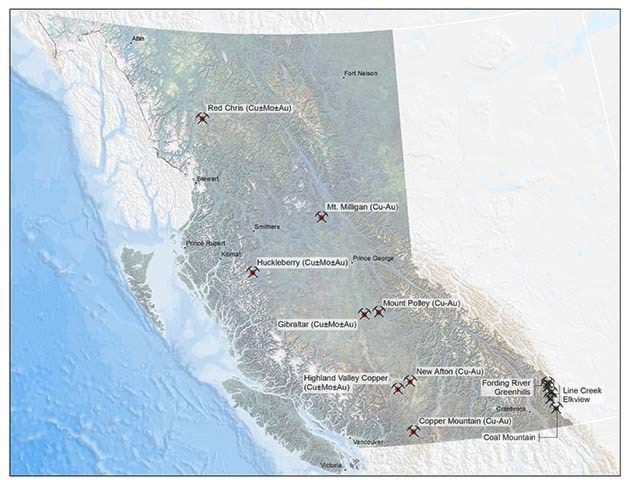Minister of Energy and Mines Bill Bennett announced Friday that there was help coming for British Columbia’s 13 operating metal and coal mines, which have been struggling for quite some time with low commodity prices.
The program, which Bennett stresses is negotiated on commercial terms, will allow the mines to defer up to 75 per cent of their Hydro bills for up to 24 months. The key, he says, is that this is a deferral, not a subsidy, and the mines will be expected to pay back the money, with interest.
“After four to five years of low commodity prices, it was becoming apparent that our 13 operating mines would be facing decisions as to whether to go into care and maintenance until commodity prices improve,” Bennett said.
Low copper and coal prices have put operations at a number of British Columbia mines at risk and some have already been forced to reduce production and employee levels. There are currently eight metal mines and five coal mines operating in the province, employing approximately 7,500 workers. These metal and coal mines generate hundreds of millions of dollars in economic spin-offs in local communities.
While this program can’t guarantee mines won’t eventually go into temporary care and maintenance, it will help mines stay open for as long as possible, Bennett says.
Bennett says the industry itself, and even unions, wanting to keep their members working, lobbied for some sort of program.
“The industry was looking at some way to reduce operating costs and this is the only thing that made sense that isn’t a subsidy and doesn’t put taxpayers on the hook.”
Each of the 13 mines will have an opportunity to enter into an agreement with BC Hydro to pay back the deferrals with interest.
“The Social Credit party in the 80s and the NDP in the 90s had programs,” he said. “Their programs looked a lot more like straight up subsidies. This is not a grant, a gift or a subsidy, it’s a deferral.”
Bennett says that feedback from the mining industry is that this will make a difference.
“It will help them make decisions to stay open as long as possible. We have had extensive discussions with all operating mines, including the coal mines in the East Kootenay. They advise this will make a significant difference.”
However, Bennett warned that if commodity prices don’t come back up, this program may not be enough to keep some mines from going into care and maintenance modes.
Copper prices have fallen to US$2.10/lb in December 2015 from a high of nearly US$4.00/lb in early 2012. In the same period, metallurgical coal has dropped from US$220/tonne to under US$90/tonne.
Electricity makes up 10 per cent to 15 per cent of total costs for metal mines. Power costs are less significant for metallurgical coal, at about 5 per cent of total costs.
